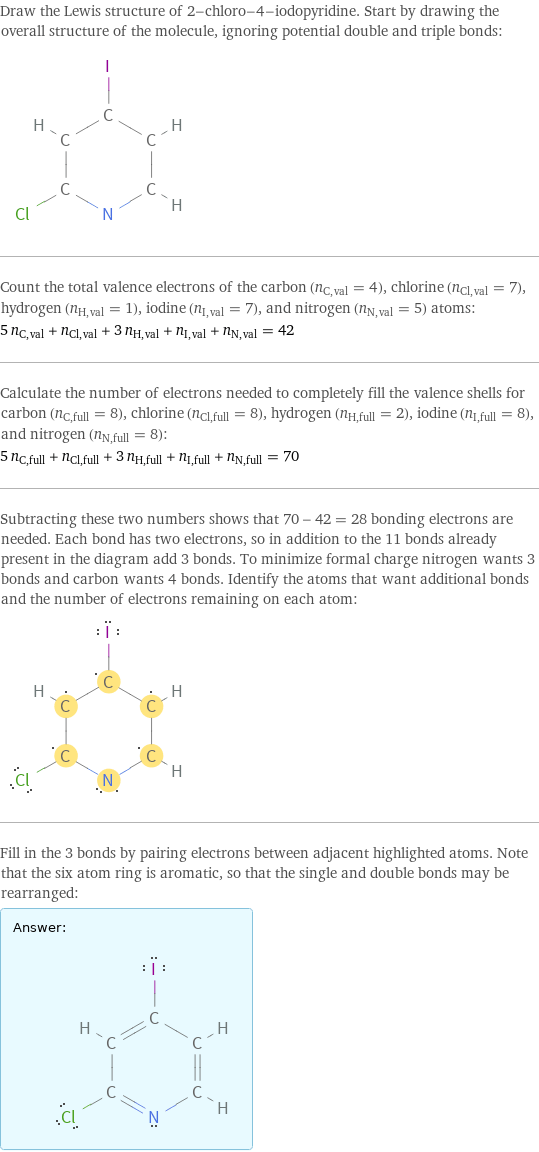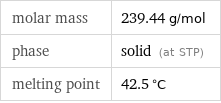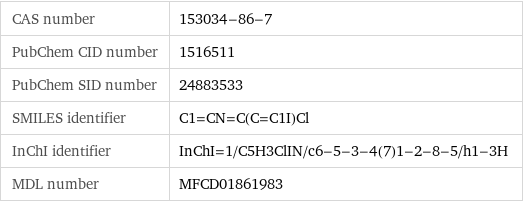Input interpretation

2-chloro-4-iodopyridine
Chemical names and formulas

formula | C_5H_3ClIN name | 2-chloro-4-iodopyridine alternate names | 2-chloro-4-iodo-pyridine mass fractions | C (carbon) 25.1% | Cl (chlorine) 14.8% | H (hydrogen) 1.26% | I (iodine) 53% | N (nitrogen) 5.85%
Lewis structure

Draw the Lewis structure of 2-chloro-4-iodopyridine. Start by drawing the overall structure of the molecule, ignoring potential double and triple bonds: Count the total valence electrons of the carbon (n_C, val = 4), chlorine (n_Cl, val = 7), hydrogen (n_H, val = 1), iodine (n_I, val = 7), and nitrogen (n_N, val = 5) atoms: 5 n_C, val + n_Cl, val + 3 n_H, val + n_I, val + n_N, val = 42 Calculate the number of electrons needed to completely fill the valence shells for carbon (n_C, full = 8), chlorine (n_Cl, full = 8), hydrogen (n_H, full = 2), iodine (n_I, full = 8), and nitrogen (n_N, full = 8): 5 n_C, full + n_Cl, full + 3 n_H, full + n_I, full + n_N, full = 70 Subtracting these two numbers shows that 70 - 42 = 28 bonding electrons are needed. Each bond has two electrons, so in addition to the 11 bonds already present in the diagram add 3 bonds. To minimize formal charge nitrogen wants 3 bonds and carbon wants 4 bonds. Identify the atoms that want additional bonds and the number of electrons remaining on each atom: Fill in the 3 bonds by pairing electrons between adjacent highlighted atoms. Note that the six atom ring is aromatic, so that the single and double bonds may be rearranged: Answer: | |
3D structure

3D structure
Basic properties

molar mass | 239.44 g/mol phase | solid (at STP) melting point | 42.5 °C
Units

Chemical identifiers

CAS number | 153034-86-7 PubChem CID number | 1516511 PubChem SID number | 24883533 SMILES identifier | C1=CN=C(C=C1I)Cl InChI identifier | InChI=1/C5H3ClIN/c6-5-3-4(7)1-2-8-5/h1-3H MDL number | MFCD01861983